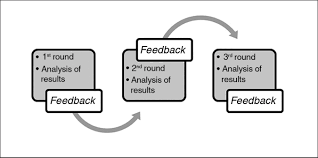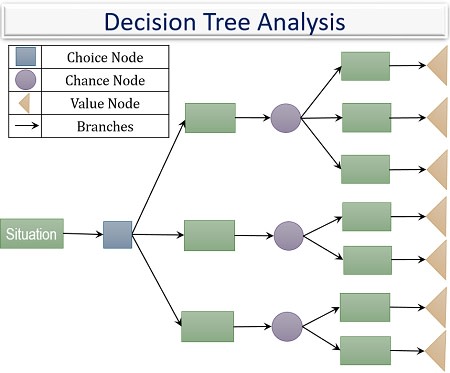The Ultimate Guide to Group Decision Making - Techniques, Tools and Strategies

“The wisdom of crowds.”
“No man is an island.”
“It takes two flints to make a fire.”
When it comes to inspirational quotes, working together is a pretty popular topic — and for good reason.
From the Seven Wonders of The World to super-fast fiber-optic broadband, many of humanity’s greatest achievements were not the work of a single person alone, but of a whole team working together toward a common goal.
So while group decision-making might not always be easy, you really can’t argue with the results.
And if you’re looking for ways to supercharge your team working, and improve group decision-making, you’ve come to the right place.

Because with the appropriate techniques, tools, and strategies in your figurative toolbox, you can transform a room of colleagues into a well-oiled decision-making machine. Keep reading, to find all this, and more, in our ultimate guide to group decision-making.
The secret to group decision-making — starts with being a great team
Putting together a well-functioning team is far more than simply throwing people in a room and hoping for the best.
It’s so much more, in fact, that entire libraries have been written on the topic of team composition — with some books more useful than others. If you’re looking to build out an effective team, it makes sense to take advice from the experts.
And they don’t come much more expert than J. Richard Hackman, the Cahners-Rabb Professor of Social and Organizational Psychology at Harvard University.
In his 2002 book, Leading Teams: Setting the Stage for Great Performances, Hackman put forward five specific conditions required for teamwork to be most effective:
1. Your team must be “real”. Hackman suggests that, in order for a team to function at its best, it must be “real”. In simple terms, he’s referring to the idea that the team must have a clearly defined leader, an unchanging core membership, and a shared purpose. This definition will instill confidence in individuals on the team and ensure everyone has a shared sense of accountability.
2. Your team needs a compelling direction. No matter how efficient a team is, all of that effort is sort of pointless if it’s focused in the wrong direction. For this reason, Hackman suggests that effective teams must all be crystal clear on the singular goal they share — and be actively pushing towards that goal together.
3. Your team requires an enabling structure. Just as with many ventures in life, achieving success as a team requires structure. More specifically, it requires a structure that empowers each of the members to do their work in the way they deem most effective.
4. Your team needs a supportive organization. No professional team exists within a vacuum. The organization within which the team exists needs to be supportive of the team’s goals in order for it to reach its goals. This may include reward systems or infrastructural concerns like supplying the necessary hardware and software.
5. Your team needs expert coaching. Even the very best employees are often more comfortable and competent when working solo. So part of the team experience is to understand how best to work with others — and coaching is usually essential to achieve this. Just like the biggest sports stars in the world all have coaches, so too do the best teams. “No man is an island”, after all.
Hackman’s five conditions for team building are a solid foundation on which you can create your team, too. But, of course, this is just the first step — this is just the groundwork. Once you have a functional team who can work optimally together, you’ll need to actually put them to work. And for that, they’ll need to start making some decisions.
If you want to learn more about how to get the best out of your team, check out our articles on career goals, how to hire the right product manager, and what makes a good manager.
So, now that our crack team is assembled, let’s look at how to get them working at their best...
5 of the best group decision-making techniques
Now that we’ve covered the fundamentals, it’s time to take things a step further.
Group decision-making techniques can provide the much-needed structure that teams need to put their egos aside and focus on the right decision for the organization.

But which technique is right for you will depend on the dynamics of your team, and to a certain extent what you’re trying to achieve as well — that’s why it’s important to try them all until you find the perfect fit for you and your teammates.
These techniques won’t leave you with a final result, (that comes a bit later), but rather they represent the mechanics of the decision +-making process.
In a nutshell, these decision-making techniques allow team members to explore a problem from all angles in a way that works for them.
Every team member is an individual, after all, and looking at the problem differently may help you all come to a decision more easily. In addition, the objective results that some of these decision-making techniques provide (like weighted scoring, for example) can be used as rationale when sharing your team’s decisions across the business.
Download now: Get our 5-minute guide on How To Use Weighted Scoring
Naturally, the most effective technique might change from project to project (and team to team), but don’t worry — there are plenty to choose from. In fact, we’ve picked out 5 of our favorites to help you hit the ground running:
1. The Delphi Method
Also known as “iterative convergence”, the Delphi Method is a technique that relies on the expertise of a group or team to assist in coming to complex decisions.
The concept underpinning the Delphi Method is that a group of experts on a topic will be able to come to a far more effective group decision than a group with only basic knowledge.
So how does it work? Well, the Delphi Method takes place as a series of “rounds”. During each round, the individual experts will answer questions related to the decision at hand. After the round, a facilitator will take the responses and collate them, then anonymously read them to the group. The next round then takes place in the light of the new information coming from the other experts.

Essentially, this is a process of refinement of information until only the purest core details, or decision options, remain. When the thought of this way, the name “iterative convergence” suddenly makes a lot more sense.
2. Brainstorming
If the previous technique was a little bit too structured for you, how about something more freeform? You probably already dabbled with this technique, but brainstorming is still as popular as ever when it comes to group decision-making.

Why?
Well, for one: brainstorming provides a very open and uninhibited environment in which to express ideas, and this liberal atmosphere can help creativity and ingenuity rise to the fore. But we’re getting ahead of ourselves — let’s begin with the basics instead.
In a nutshell, brainstorming is a group decision-making technique in which every member of a group is encouraged to produce any and all ideas that come to mind — no matter how wild or wacky they may be. Popularized in Alex F Osborn’s 1967 book Applied Imagination, the concept of the brainstorm is something still in regular rotation at workplaces across the globe.
Because brainstorming usually takes place as a freeform session, there are usually few (if any) limitations on the process. This can mean that some ideas might be a little bit over the top, but it can also mean that out-of-the-box solutions suddenly become a real possibility.
3. The Nominal Group Technique
Also known by its acronym NGT, the Nominal Group Technique is essentially a more structured form of brainstorming. The concept is designed to encourage everyone to give their honest opinions and ideas without holding back, but also to introduce a moderation step whereby the rest of the team discusses and prioritizes each idea openly.
Perhaps the best way to explain NGT is by walking through what a typical session might look like. Let’s imagine that you and your team have a problem to solve and brainstorming alone just won’t cut it. Here’s how NGT can help:
First, the issue at hand should be clearly stated so that everyone in the group understands it.
Just like a brainstorm, each member of the team should take whatever pops into their mind and write it down. Again, just like brainstorming, there are no limits here.
Each member of the team reads aloud one of their ideas and the leader of the session writes it on the whiteboard. Crucially, no discussion of the ideas is allowed at this point.
Once all members have contributed ideas, the team will discuss each one together. If everyone agrees, ideas can be removed from the list, or the wording may be changed.
Eventually, the team should be left with a refined list of solutions upon which they all agree.
4. Ranking
The democratic option in life is often the fairest way to do things, and the same can certainly be said for group decisionm-aking.

Just like deciding on which flavor chips to eat out of the packet first, prioritizing and putting items in order is something that just comes naturally to us as human beings. We can leverage this instinct when making group decisions to refine our list of solutions.
So how do you go about ranking your options when making group decisions? The first step is to simply have each member of the team look at what’s available, and then — privately — make their own ranked list of all of them. This could be 1-10, A to Z, whatever works for you. Once that’s done, the lists can be submitted and an average of each of the ‘votes’ can be taken for each item.
From here, it’s a matter of fairly simple math to derive which of the items on your list of solutions is the most popular among the group.
5. Weighted Scoring
Here’s a decision-making technique that’s very close to our hearts at airfocus (so close, in fact, that we have an entire guide dedicated to it): weighted scoring.
Ideal for use in scenarios when your team has lots of different potential solutions but no clear criteria for slicing and dicing them, the weighted scoring model relies on the idea that some solutions or ideas may be more business-critical (or riskier) than others.

When applying this system to your decision-making process, you and your team must evaluate each item on your list and assign criteria like Business Value, Costs, and Risks. Each of these criteria must likewise be assigned a score based on the weighting of the item. For example, an item with a high score for business value and a low score for risk would probably be a very high priority item.
Once you’ve carried out weighted scoring for each item on your team’s list, you’ll be able to total up the scores and make a much more informed decision — as a team — about which of them you should focus on first.
4 essential group decision-making tools
Even when the very best teams in the world have the very best techniques in the world, decision-making may not flow smoothly — not without the right tools.
Sometimes these tools are as simple as a whiteboard, a dry-wipe marker, and a few laptops, but there are plenty of theoretical and diagrammatic tools that can aid the decision-making process, too. Unlike the techniques we discussed above, these tools are more about visualizing the problem in a way that makes decision-making easier.
In fact, in many cases, it’s a good idea to use one or more of these tools as part of the group decision-making techniques described above.
Decision-making tools don’t need to be complex, but they do need to simplify the decision-making process in a way that makes consensus decisions easier to come by. These are 4 of our favorites:
Sticky Dot Voting
Sometimes the simplest tools really are the best — and it doesn’t get much simpler than sticky dot voting.
How does it work? It’s a piece of cake: simply list all of your discussion points on a whiteboard or wall (sticky notes come in very handy here), then distribute a set of small sticky dots.

At this point, you can explain to your team that each sticky dot represents a vote of approval for a specific item or solution. Then all they need to do is walk up and stick their dot in the relevant point.
Once everybody in the team has taken the time to place their sticky dot on the wall, you can all take a step back to review.
What you’ll actually be looking at is a rudimentary heatmap: wherever the highest concentration of sticky dots is probably where you should start your decision-making. From here, you can rinse and repeat as many times as you like until your to-do list is 100% prioritized.
(Or until you run out of sticky dots — whichever comes first!)
The Decision Tree
Before your team makes a decision, one of the most important steps is to attempt to forecast the outcome of those decisions.

It’s for this precise purpose that the decision tree was created: it’s a highly visual, and very intuitive, way to predict how certain decisions will turn out. Unlike a mind map, a decision tree is a non-linear tool.
This means you can take multiple potential decisions and run them through each step of the tree to help you decide whether it’s the right choice or not.
Decision trees are quite interesting from a design standpoint because they essentially mirror the brain’s own thought process when making decisions.
Simply put, a decision tree starts out with a single question right at the top or bottom of the page — think of this as the root.
From here, nodes are added below the root with binary questions which challenge its assumptions or make alternative suggestions.
It’s easy to see how, after a few branches leading to a few nodes, you can quickly develop a diagram resembling a tree.
Once each of these branches reaches its natural conclusion, usually through several nodes, the final node is known as a leaf. A single chain from the seed to the leaf is known as a rule.
Phew! If you’re not much of a horticulturist, don’t worry — decision trees are much easier to understand on paper and can be a powerful tool when it comes to helping your team make logical, fact-based decisions together.
The airfocus Priority Poker tool
Of course, we couldn’t let the discussion of prioritization go by without mention of our very group decision-making tool: Priority Poker. Especially since we recently launched V2 of the Priority Poker tool.

This tool — exclusive to airfocus — is a fun and effective way to enable group decision-making.
So how does it work, and how can it help? It’s easy. You simply click on the Priority Poker feature, to lay the table.
Once all the options are out there to be voted on, team members anonymously score each idea or solution in the list or backlog.
You can ask players to vote via key metrics, such as value, cost, risk, etc. to get a holistic picture of which ideas deserve to be followed through, and which the group has decided to leave behind.
After everyone has done their scoring, you’ll see a handy summary of what your team really thinks is important. Even better, you can apply these rankings to your roadmap right from the game — handy, right?
The Pareto Analysis
You’ve probably heard of this one by its more common name: the 80/20 rule.
What you probably didn’t know is that it dates back all the way to 1896, when it first appeared in the book Cours d’economie politique by Italian economist Vilfredo Pareto.
How does it help you make decisions?
Well, the rule simply states that 80% of a project’s benefits usually come from 20% of its effort. Carrying out a Pareto analysis allows your team to better identify where this 20% is and use that information to better prioritize solutions.
This process is particularly useful when your team is making decisions based on customer feedback like errors and bug reports. You can simply total up the number of times each individual issue is reported, then translate these reports into a percentage and plot them onto a graph.
Finally, just draw a straight line to intersect at 80% of the count and the focus your team should probably decide to take will suddenly become very clear.
How to make a final decision (as a group)
At this point, we’ve covered team composition, some handy techniques to help that team make those decisions, and some tools they can leverage to make the process easier. But a crucial question remains: how will we know when a decision has been made?
What if the outcome of these group decision making tools and techniques leaves a few great options on the table: which one do you go for?
Just like a jury room, your team will also have to agree on a decision-making strategy that delivers that final result.
With that in mind, here are the most common group decision-making strategies your team could choose from:
Unanimous decision. This is the absolute gold standard of group decision making. If you can find a way to have every single member of a team come to the same decision, that across-the-board agreement really reinforces the weight of the said decision. It doesn’t always happen that way, of course. Which is why there are other options...
Consensus. Just like the murky world of politics, business decisions aren’t always black and white. Because of this, you’ll sometimes find it impossible for every member of the team to agree on an outcome. By using the democratic majority method, there’s no need to waste time trying to convince those who disagree, because the chosen outcome is the one that the majority of the team selects. Those who disagree must nonetheless agree to accept the final decision to reach a consensus.
The Executive Decision. There’s no avoiding it: sometimes, it falls to just one person (usually the leader of a group) to make a final decision. In this case, the chosen person will listen to all sides of the discussion, review the information provided by the group decision-making tools, and make a judgment call. It’s certainly a more autocratic way to do things, but if you think about it this is how many business decisions are made today.
Ready to make better group decisions?
It’s easy to dismiss group decision-making as something difficult and, occasionally, frustrating. But, if you leverage the techniques, tools, and strategies we’ve shared in this guide, you might just find it a truly rewarding experience.
You should now have everything you need to get out there and build a goal-smashing, name-taking, problem-solving team to tackle almost any business challenge (and explain exactly how they did it).
And don’t forget: airfocus is the ideal tool to keep them all aligned and pulling in the same direction.
Give it a try today and discover what you (and your team) could really achieve.

Andrei Tiburca

Read also



Create effective product strategy

Experience the new way of doing product management



